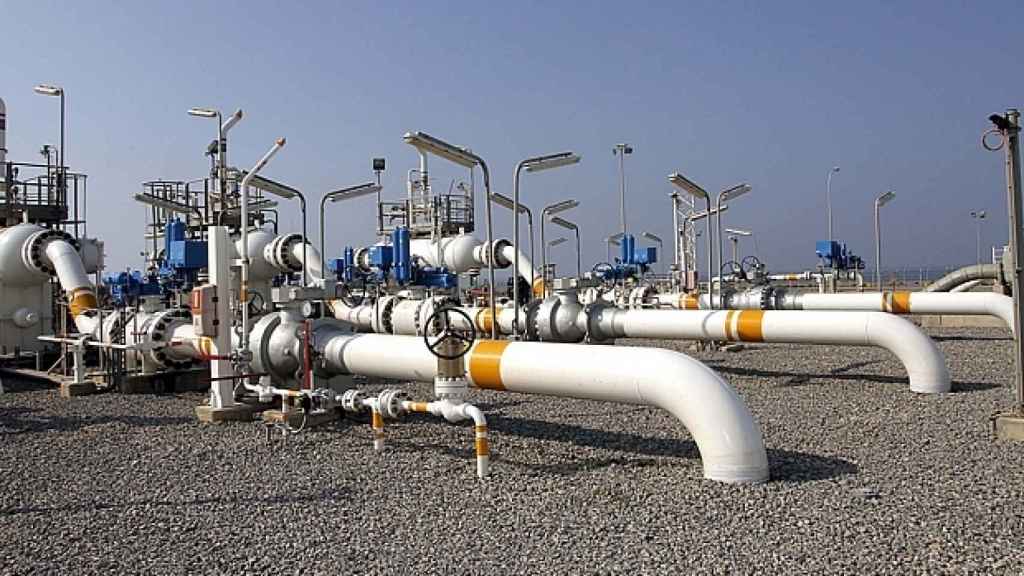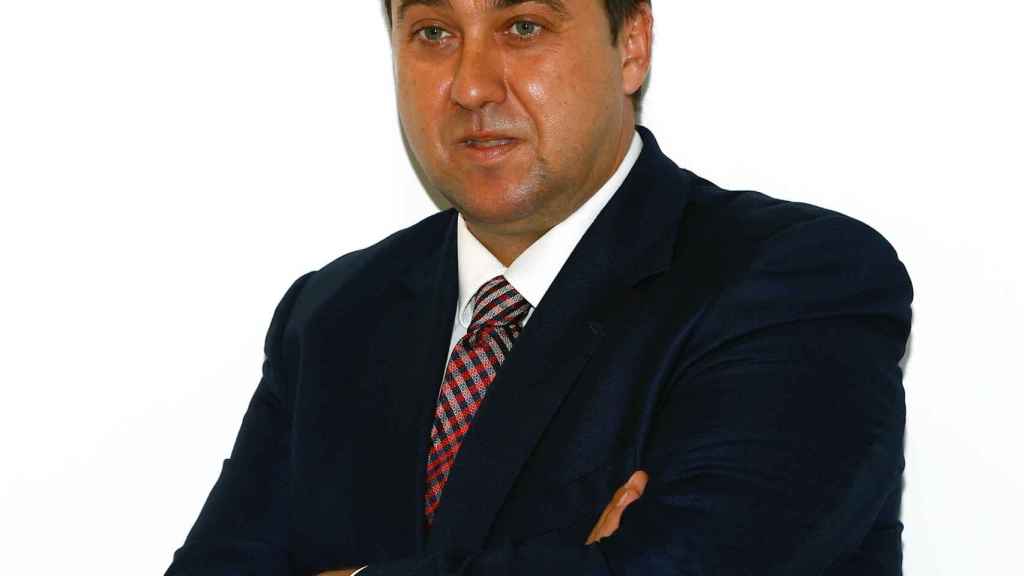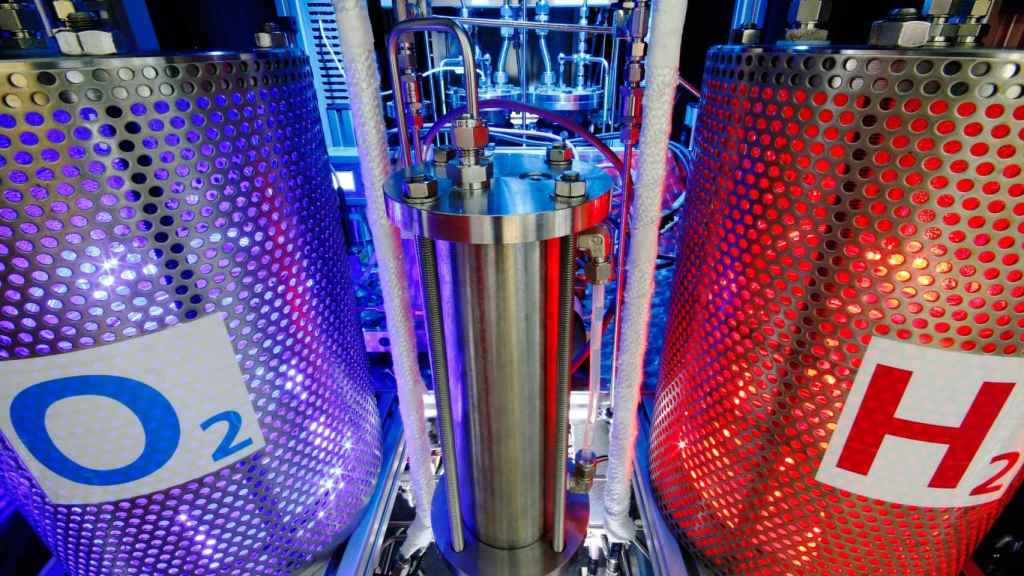Related news
The Spanish gas sector is in the focus today. Gas prices soaring to levels that have not been seen for more than a decade have set off all alarms and, even more so, when winter approaches Europe and everything indicates that it will continue to rise.
And apart from all this, in Spain the situation between Morocco and Algeria. The latter said it would stop using the gas pipeline that passes through its Maghreb neighbor to Spain after the breakdown of diplomatic relations between the two countries.
EL ESPAÑOL-Invertia has spoken with Joan Battle, President of Sedigas, on this situation, the evolution of this raw material, its role in the circular economy and the alternatives in biogases or renewable gases.
The trip of the Minister of Foreign Affairs, José Manuel Albares, together with the president of Naturgy, Francisco Reynés, and that of Enagas, Antonio Llardén, to Algeria, what should he contribute to Spain?
For Spain it is important that there be good relations between Algeria and Morocco, the two gas pipelines that reach our country come from Algerian gas, but one of them crosses Moroccan territory. And although the supply is assured, we are confident that the Maghreb conflict will be resolved.
It benefits everyone to establish good relationships, because it is always much better to have two pipelines than just one.
Image of the Medgaz gas pipeline.
The problem is that gas prices continue to skyrocket and are expected to continue throughout the winter. What alternatives are there to prevent household and SME bills from becoming more expensive in the coming months?
High gas prices are expected to continue until March, but a Royal Decree has just been approved that limits this increase to a maximum of 4.35%, although it is only directed at the TUR rate (Last Resort Rate), that is, households and SMEs. A rate that also changes. From now on, three types of TUR consumers are differentiated.
It affects about 7.95 million consumers, that is, less than 20% of the total. And it is to these consumers that this freeze is applied within the framework of these protection measures for the most vulnerable consumers.
Until now, the mechanism for setting this last resort rate was set by the Government and was reviewed quarterly based on a formula that included the cost of the raw material indexed to the evolution of the barrel of Brent oil and the evolution of the price. of gas in certain global markets, and then the price of the euro in relation to the dollar.
But, from now on and temporarily, they will change the calculations to set that price.
With these data, how much is expected that the price of gas could rise in the coming months?
What we know so far is that the increase in the cost of raw material is 129% compared to July, and now it would be the revision, on October 1. That does not mean that the gas bill could rise by 129%, but rather that, depending on what the energy cost represents, it would rise by 28%.
And for consumers of the regulated tariff, the Government has set a limit. It does not allow the entire increase in gas to be transferred to the regulated tariff, but only up to 35% of the increase in the cost of raw materials compared to what was on July 1, when the last revision was made.
This means that for TUR 1 (those with only DHW and cooking, for example, less than 5,000 kWh) the annual bill will go up 0.91%, and without the limitation it would have increased by 25.8%. For TUR 2 (which also already have heating, between 5,000 and 15,000 kWh), the annual bill will rise by 4.4%, and without the limitation it would have increased by 36.1%. Finally, for TUR 3 (SMEs, from 15,000 to 50,000 kWh), the annual bill will rise by 10.6%, and without the limitation it would have increased by 47.6%.
All the regulatory development is missing, but we also know that on January 1 it will only be able to increase 15% compared to existing prices. And if there are possibilities, that deficit could already be recovered. Otherwise, over the next few quarters it should be possible.
Joan Batalla, president of Sedigas
The trading companies will have to buy the gas at market price, but they will not be able to transfer it to their customers. Won’t this mismatch create a tariff deficit, as it did with the electricity system?
If there is a chronic and structural insufficiency of income versus costs, there could be a tariff deficit, but we hope that this period of high prices will be temporary and the difference can be recovered in the months of low prices, that is, in summer.
Are there other alternatives to lower the price of the gas bill?
Our proposals look at the measures that the Government has approved to lower the electricity bill for vulnerable consumers, households and SMEs. First, last July it reduced the VAT from 21% to 10%, and now in addition to maintaining it until the end of the year, the electricity tax is lowered from 5.11% to 0.5%, in addition to other tax reductions.
Why not do the same for gas customers? They are the same, households and SMEs, vulnerable families that must face a bill to heat their houses this winter.
But why is the price of gas so high around the world? What is being done wrong?
It is true that we are in a moment of high prices, but it is temporary. The supply tensions of Russian gas, the economic reactivation after the pandemic with an increase in the demand for Asian gas or the hurricane problems in the US.
And, also, little is said but it is something positive and that is because this increase in demand is because certain economies are in processes of decarbonization, abandoning electricity generation from coal to replace it with gas. The Asian market is an example.
We ask that the same tax cuts be applied to the gas bill as the electricity bills, the vulnerable consumers are the same
This decarbonisation must also be carried out by the Spanish gas sector. What are the plans that are currently being developed and what is expected to be done in the coming years?
At Sedigas and the gas companies, we have already been working on innovation for a number of years, and there are already very interesting initiatives. The European energy system is in a process of decarbonisation and transformation. We are moving towards a 100% renewable model in a 2050 horizon, and that also includes renewable gases. And, obviously, here are different technologies, different options, some in different degrees of maturity. For example, biogas is already mature, biomethane is ready for use and the rest of Europe is betting on it to be a renewable gas in the short term.
In the case of hydrogen, that horizon extends beyond 2030.
As we are able to develop and advance that learning curve for hydrogen from renewable sources, we can start talking about green hydrogen.
In the meantime, let’s focus on biomethane. Why? Basically because Spain has enormous potential. Even the European Commission in a 2020 report recognized us as one of the countries with the greatest potential at the European level. France or Germany are also betting on biomethane because it has a whole series of advantages.
It is the answer or the solution to the management of waste of all kinds: livestock, agri-food, urban solid waste, water purification, etc. And in our country it is an obviously serious problem, because you have to comply with the directives and the management of waste that goes to landfill is not the solution, neither optimal nor efficient. In addition, at the same time, it has opportunities in the rural world, generating opportunities, economic growth or circular economy.
It is also the most mature technology and has an unquestionable advantage, it does not need to be adapted to the gas infrastructure, that is, a renewable gas molecule can be perfectly mixed with conventional gas.
Elecnor will build a green hydrogen plant in the port of A Coruña
What developments are being carried out in Spain to produce biogas or green hydrogen?
There are already projects in Spain that are generating biogas, although in an incipient phase. For example, in Madrid for many years it has been operating in Valdemingómez, but there are developments in Murcia or in Catalonia that show that this can be a reality, as long as we accompany it with the appropriate roadmap and adequate regulations.
The Biogas Roadmap has just been published, but we also need a certification that guarantees the renewable origin of this gas. Progress has also been made in this regard because a partial transposition of the European directive requiring these certificates has just been put out for public consultation.
And it is important because it could lead to the decarbonisation of a significant part of energy consumption. For example, in Spain, gas consumption is around 330 watt hours, both for electricity generation and for conventional uses. The potential of biomethane, with the numbers that we have updated from the European Commission report, estimates it at about 137 watt hours. In other words, in a reasonable period of time, practically more than a third of the gas system could be decarbonized. Not to mention the incorporation of green hydrogen, which would come later.
For TUR 1 consumers (those who only have hot water and kitchen) the annual bill will go up 0.91%, and for TUR 2 (with heating) the annual bill will go up 4.4%
By when is green hydrogen expected to be competitive and enter daily use like other gases?
Hydrogen has yet to make the learning curve in cost reduction and it is still necessary to adapt some aspects of the gas infrastructure for the blending, the mix in the infrastructures.
Electricity represents around 20% of the final energy consumed, and of that electricity, 73% must come from renewables. At least that is the goal for 2030. And as long as combined cycles are critical to guarantee supply security, there is an option to make them greener: we can use renewable gases. Therefore, a 100% decarbonization of the electrical system would be feasible.
However, we must not forget that we have to decarbonise the other 80% of the remaining energy consumption. We have to give an answer, where undoubtedly there will be progress in the electrification process. But there are certain end uses that cannot be transformed, such as heavy transport, thermal needs, heat-intensive industry, etc.
In the latter, the decarbonisation process, in a first stage, was thanks to natural gas that allowed to eliminate the coal, but in a second stage it is necessary to bet on renewable gases, which can be synthetic gas, biomethane or hydrogen at the time of respond to these industrial needs.
Follow the topics that interest you
Reference-www.elespanol.com


